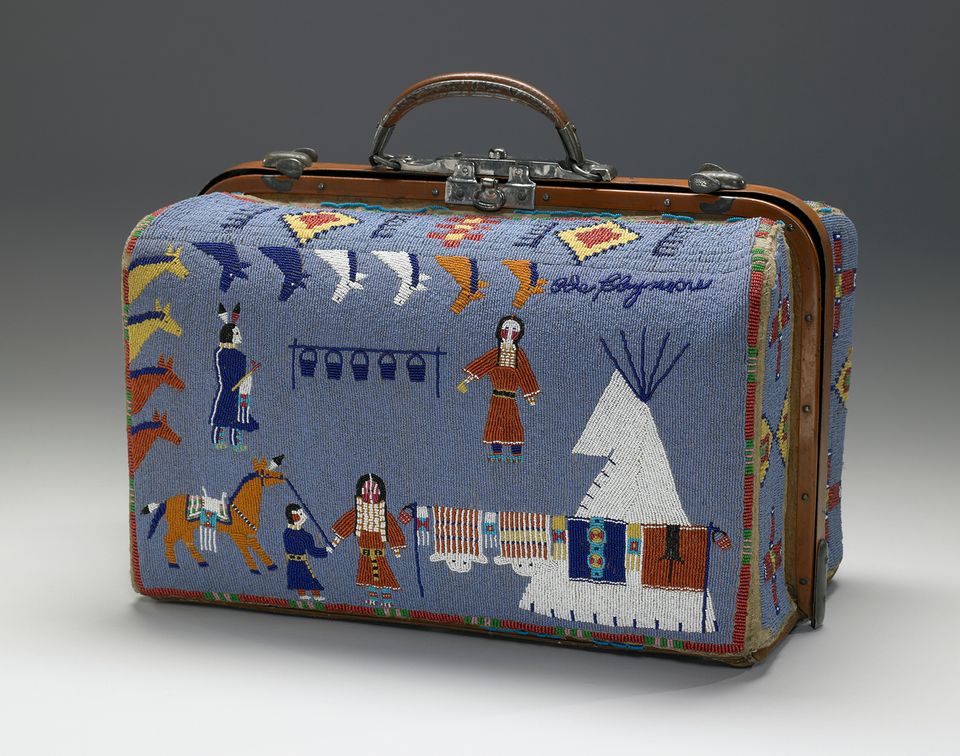
Nellie Two Bear Gates (Gathering of Clouds Woman) (Iháƞktȟuƞwaƞna Dakhóta, Standing Rock Reservation), Valise, 1880–1910, beads, hide, metal, oilcloth, and thread, Minneapolis Institute of Art, The Robert J. Ulrich Works of Art Purchase Fund, 2010.19. Photo: Minneapolis Institute of Art
Artist’s Language
Maȟpíya Boğá Wíŋ kiŋ wašíču wayáwa thípi ektá áyapi héehaŋ nína ičháŋtešiče. Íŋyaŋ Bosdáta Oyáŋke ta ihúŋni héehaŋ kidákhota ga wašíču wóuŋspe kiŋ eȟpéye. Wapápšuŋka kiŋ dé wadáka čha táku núm hináphe. Thokáheya he wakháŋkičhiyuzapi kiŋ akšu ga inúŋpa he thapáwaŋkányeyapi ga otúȟ’aŋpi kiŋ akšú. Maȟpíya Boğá Wíŋ thakóžapaku kiŋ Susan Power ečíyapi eyé, “Táku oyáka čhíŋ hená pšithó wíyakpakpa kiŋ úŋ oyáke.”
English
Nellie Two Bear Gates suffered a torturous separation from her family when she was forcibly sent to boarding school in Missouri. When she returned to Standing Rock, she turned her back on what she was forced to learn at the boarding school and deeply reembraced her Dakhóta language and artistry. This valise pictures important aspects of Dakhóta culture. Two Bear Gates depicts either the marriage between two families or a woman’s coming-of-age ceremony along with the gift-giving traditions associated with such hallmark events. Either way, as her granddaughter, Susan Power, states, “. . . the stories she chose to tell, with glittering beads, were Dakhóta.”













